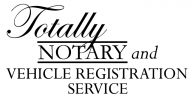The ownership document for a California vehicle is called a Certificate of Title. The Certificate of Title, sometimes called a Pink Slip, contains a description of the vehicle and the legal owner’s name(s) and address. It may also contain the original lien holder’s name and address if the vehicle was financed when originally purchased. If the Certificate of Title does contains a lien holder, it must also contain the lienholder’s release of interest or a separate Lien Satisfied/Title Holder Release form before the vehicle can be sold.
The Certificate of Title has two sides. The first side is for the owner to release interest in the vehicle and to certify the odometer upon sale. The back side is for the buyer to complete as the new registered owner. It is important to print legibly and to follow the written instuctions printed on the form to avoid errors when registering.
The Front Page:
Owner(s) Releasing Interest:
The owner(s) will date and sign their name(s) on 1a and 1b. If more than one person owns the vehicle and they hold the title as Joe AND Mary Smith, both owners must sign. If the title is held as Joe OR Mary Smith, only one owner needs to sign. The owner(s) should sign exactly as their names appear on the title, including any middle names.
Odometer Disclosure:
Enter the odometer on the date of the sale.
The owner(s) will date and sign the left side. If two owner(s) hold title, they should both sign in the same space. They will also print their names below their signatures exactly as they are printed on the title.
The right side is for the buyer to date and sign. The buyer will also print their full name below their signature as they plan to take title.
The Lien Holder section:
The bottom of the front page is for lien holders to declare interest in the vehicle. The owner does not sign release there, it is for a bank or finance company to sign when they release interest after the lien has been satisfied. If the vehicle was originally financed, the lien holder’s release will be indicated by a stamp and signature of the lien holder. If the lien holder has not signed a release on the title, a separate Lien Satisfied/Title Holder Release form should be attached.
The Back Page:
The buyer(s) will complete the back page. Pay close attention to the order required when entering the buyer’s name. The correct order is Last Name, First Name, Middle Name as stated on the buyer’s driver license. If two buyer’s will be on the title, the choice of desired conjunction AND/OR must be checked. If AND is checked, both owners will be required to sign when selling the vehicle in the future. If OR is checked, only one owner would be needed to sign when selling.
The first buyer prints their name on line 3a. The second buyer, if applicable, would print their name on line 3b.
Street address is printed on line 4. City, State, Zipcode is printed on line 5.
Line 6-8 can vary depending on the version of the Certificate of Title. Some titles request residential county or a mailing address (if different from residential address).
Line 9a is for the first buyer to date and sign and to enter their driver license or ID card number.
Line 9b is for the second buyer, if applicable, to date and sign and to enter their driver license or ID card number.
At the end of Line 9a is a box for Purchase Date to be entered. Below it, at the end of Line 9b, is a box for the Purchase Price or if Gift, to be stated.
©2019 Totally Notary All Rights Reserved


What portion does the owner keep to make sure the buyer takes it to the DMV? Does the owner keep a portion of the paper
to show the DMV that I no longer am responsible for this car?
There is no guarantee the buyer will take it to the DMV. That’s why it is important to file a Release of Liability once the sale is complete. If you utilize the DMV’s Bill of Sale (Reg135) when selling the vehicle, you will have the buyer’s name and address, so you can accurately report it to the DMV when you process the Release of Liability. Some titles have the seller’s Release attached to the top of the title, which is mailed to the DMV after the sale. For those titles that are missing the Release, the Release of Liability can be processed online on the DMV website. Make sure to print the confirmation as proof that the Release of Liability was filed electronically.